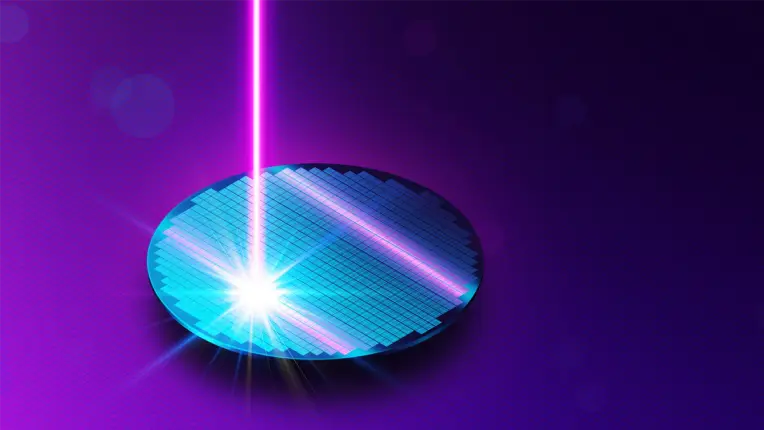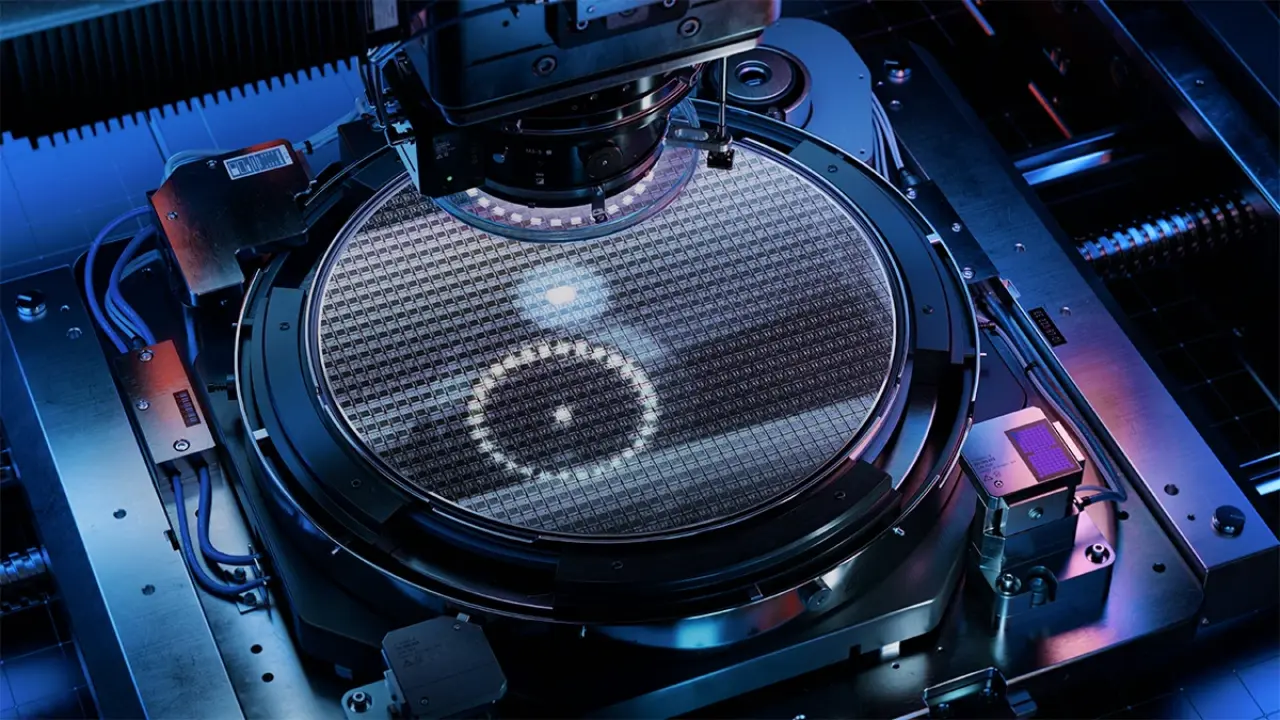Extreme Ultra Violet Lithography (EUV)

In the EUV light source chamber, very high flow of hydrogen is used to protect the EUV collector mirrors from tin deposition. Primary dry pumps with high hydrogen pumping capacity are used to maintain the desired pressure level. In the scanner chamber where the EUV light travels to the wafer, very low operating pressure is achieved thanks to turbopumps.
Learn more about EUV
How does EUV work?
It took over 20 years to develop EUV technology and EUV equipment counts among the most complex machines ever built (as an illustration, such system includes more than 100,000 components). To make it short, in the EUV source chamber, a plasma is generated by hitting tin droplets by high power laser light pulses (50.000 times every second). This plasma emits EUV light at 13,5 nm wavelengths. The EUV light is then directed and focused to the reflective mask and finally hits the wafer, through successive multi-layer mirrors. Because any matter absorbs EUV light, such a process is performed under vacuum environment.
What are the application requirements of EUV?
Application requirements are:
- Low cost of ownership due to low power consumption and long maintenance intervals
- High hydrogen pumping capacity
- Low base pressure
- Low footprint
What are the best vacuum solutions for EUV?
Pfeiffer has the right technology to answer such challenging requirements. Our high capacity & high flow ADH Series dry pumps provide the highest H2 pumping capacity on the market which makes the perfect fit when coupled with our latest high performance vacuum booster HiLobe. For the secondary vacuum requirements, our vibration free & high H2 capacity HiPace & ATH-M turbopumps are the solutions. Additionally, such equipment can only operate under the strictest tightness conditions, which are guaranteed through the use of our high-performance helium leak detectors.
Besides the EUV system itself, hundreds of parts & components need to be developed or manufactured within a vacuum environment: Pfeiffer is one of the major vacuum suppliers delivering solutions to the complete EUV ecosystem: From our small air-cooled dry pumps ACP Series to our high capacity turbopumps, DigiLine gauges and vacuum components, Pfeiffer offers a complete vacuum solution for this application.
What is the difference between Deep Ultra Violet (DUV) and Extreme Ultra Violet (EUV) Lithography?
For the last decades, Deep Ultra Violet (DUV) technology has been used at atmospheric pressure with a light of 193 nm wavelengths. This technology comes however to its limits when lower critical dimensions have to be achieved, as lower light wavelengths are needed: Below 10 nm node, a new technology named EUV (Extreme Ultra Violet) had to be developed.
